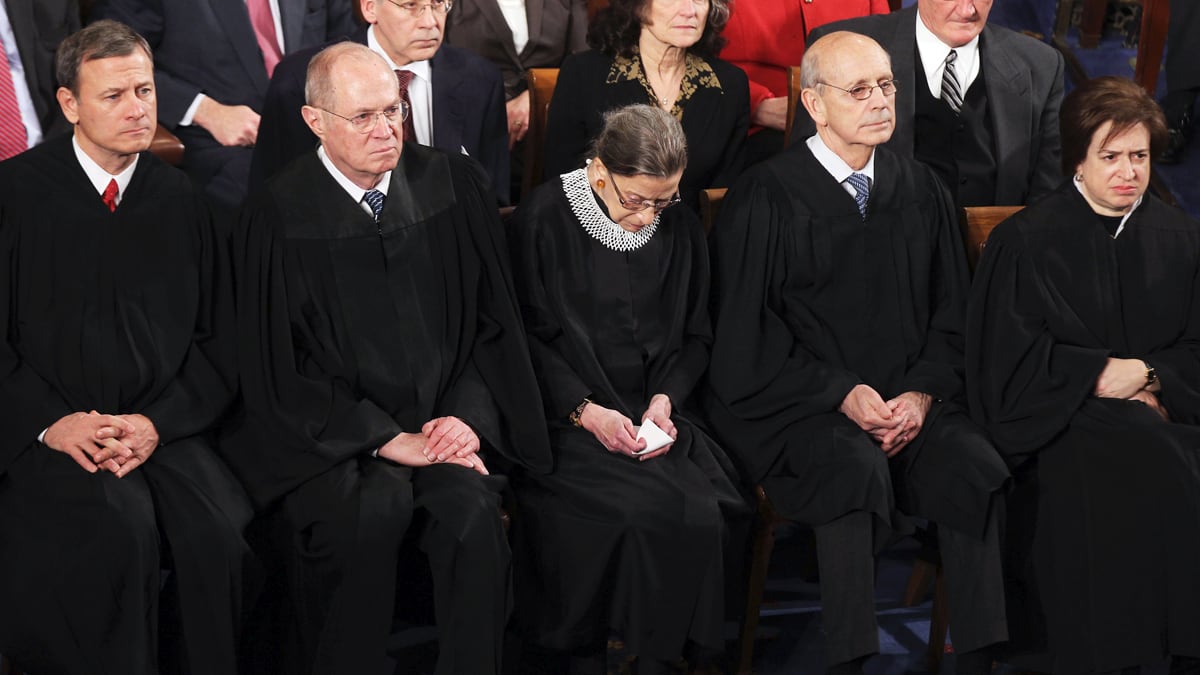Now that the dust has settled over the Supreme Court’s health-care ruling, it’s time to consider the central lesson of that decision: The fate of the most significant piece of domestic legislation of the past 50 years hinged on the viewpoint of a single man.

Put another way: It’s time to rethink judicial review.
As someone who supported the Affordable Care Act and had confidence it was constitutional, the decision upholding the law did not gore my ox. That the Court got it right, however, cannot paper over the increasingly apparent antidemocratic nature of judicial review, and the increased willingness of the justices to override the judgment of the other two branches of the federal government.
Of course, we’ve had judicial review in the United States since even before Chief Justice John Marshall’s landmark 1803 opinion in Marbury v. Madison. But it was Marbury that cemented the idea in our legal culture that federal courts can nullify acts of Congress. At a time in our history when neither blacks nor women could vote, and when even white males could not vote until they were 21, it was difficult to characterize judicial review as any less democratic than ordinary legislation. A decision by one group of middle-aged white men (Supreme Court justices) to strike down something enacted by another group of middle-aged white men (members of Congress) threatened democracy far less than when the courts act today.
But in an age of social media—when millions of Americans can instantaneously express their views to our elected officials and can easily mobilize to act—the idea that the courts are needed to police the boundaries of political power is truly obsolete. An institution that might have protected us two hundred years ago has become a shackle.
The moment is propitious for reform. Two of the left-leaning justices (Stephen Breyer and Ruth Bader Ginsburg), and two of their counterparts on the right (Anthony Kennedy and Antonin Scalia), are getting up there in years. It is conceivable that any might retire before the end of the next presidential term. And who will serve that term—Barack Obama or Mitt Romney—is a coin flip. In other words, both Democrats and Republicans have a mutual interest in fixing this problem now.
So what can we do? Term limits is, of course, an old and terrific idea, but it requires a constitutional amendment, and that’s a time-consuming and cumbersome ordeal. But there are several other fixes Congress could implement on its own.
First, Congress should eliminate the power of federal courts to adjudicate separation of powers cases. Congress should enact a law preventing federal courts from deciding whether a branch of government—be it the executive branch, the legislative branch, or even the judicial branch—has acted outside its constitutionally prescribed boundaries. Instead, each branch would decide for itself whether it has the authority to act. If a majority of Congress believes the federal government does not have the authority to enact health care legislation, that’s the end of the story. If a majority believes otherwise, that’s the end of the story, too.
The basis for this proposal lies in Congress’s power, provided for by Article III of the Constitution, to create exceptions and make regulations governing the Supreme Court’s jurisdiction. In the past, Congress has occasionally attempted to remove a discrete category of cases from the federal courts’ jurisdiction—for example, cases relating to abortion, or to school prayer. But Congress has not previously undertaken to bar the courts from adjudicating an entire category of cases.
In truth, the Supreme Court is no more expert at identifying the boundaries of governmental power than are the members of the other branches. Moreover, if the members of the other branches overstep, the people—i.e., the voting public—can remove them and restore the prior balance. But when the court oversteps, fixing the problem is practically impossible. We simply do not need judicial review to safeguard the separation of powers.
Alternatively, if removing the courts from the equation altogether is too draconian, Congress should pass a law providing the Supreme Court cannot declare an act of Congress unconstitutional unless the vote is at least 6 to 3, and that courts of appeals cannot declare an act of Congress unconstitutional unless the opinion is unanimous. No longer would bare 5-4 majorities have the ability to nullify laws supported by a majority of the people.
The authority for this second proposal is less straightforward than the basis for the first solution, but it still rests on the constitutional text. While Article I of the Constitution gives each house of Congress the power to enact rules for its operation, no provision gives the courts the exclusive authority to prescribe their own operational rules. Indeed, the power of the courts to write and implement procedural rules is based on a congressional enactment. In short, Congress has the power to write procedural or operational rules for the courts, and Congress should therefore provide that the Supreme Court cannot thwart the will of the majority unless six of the justices believe doing so is required.
Finally, at the Constitutional Convention, the framers considered and rejected a proposal by James Madison to approve a Council of Revision. This group would have reviewed the constitutionality of certain legislation before it was implemented. Congress should enact the inverse of such a proposal and pass legislation providing that whenever a court strikes down an exercise of congressional power, Congress can override that decision by a vote of two thirds of the members.
None of these proposals would affect the power of the Supreme Court or the lower federal courts in so-called individual-rights cases. The courts would still be permitted to rule that an individual’s constitutional rights have been violated, even by a vote of 5-4. They would still police the fairness of criminal trials. They would still protect the rights of minorities. They would continue to interpret statutes, treaties, and regulations, and enforce the superiority of federal law.
What the courts would not be able to do is hold that another branch of government has exceeded its lawful authority. Instead, if the people themselves believe their elected officials have gone too far, the people themselves can elect their replacements.






